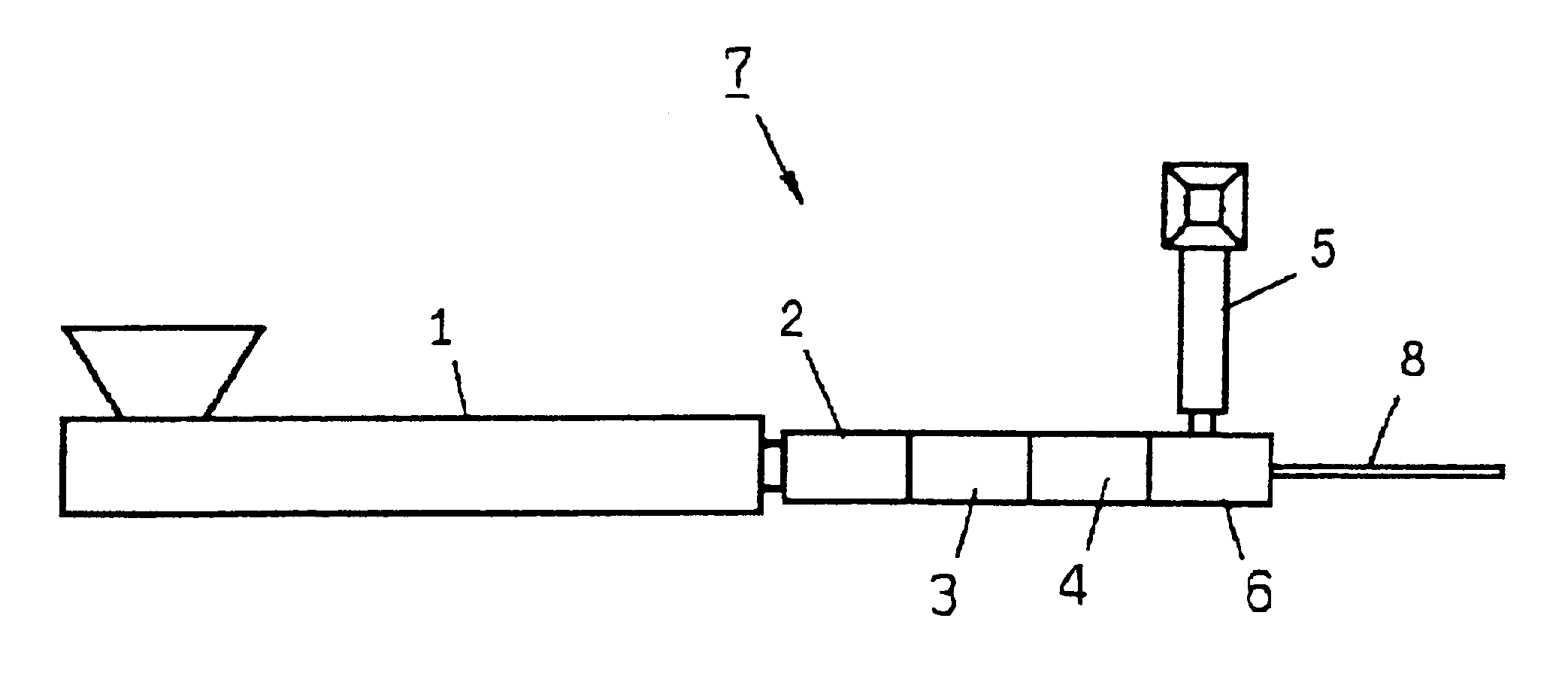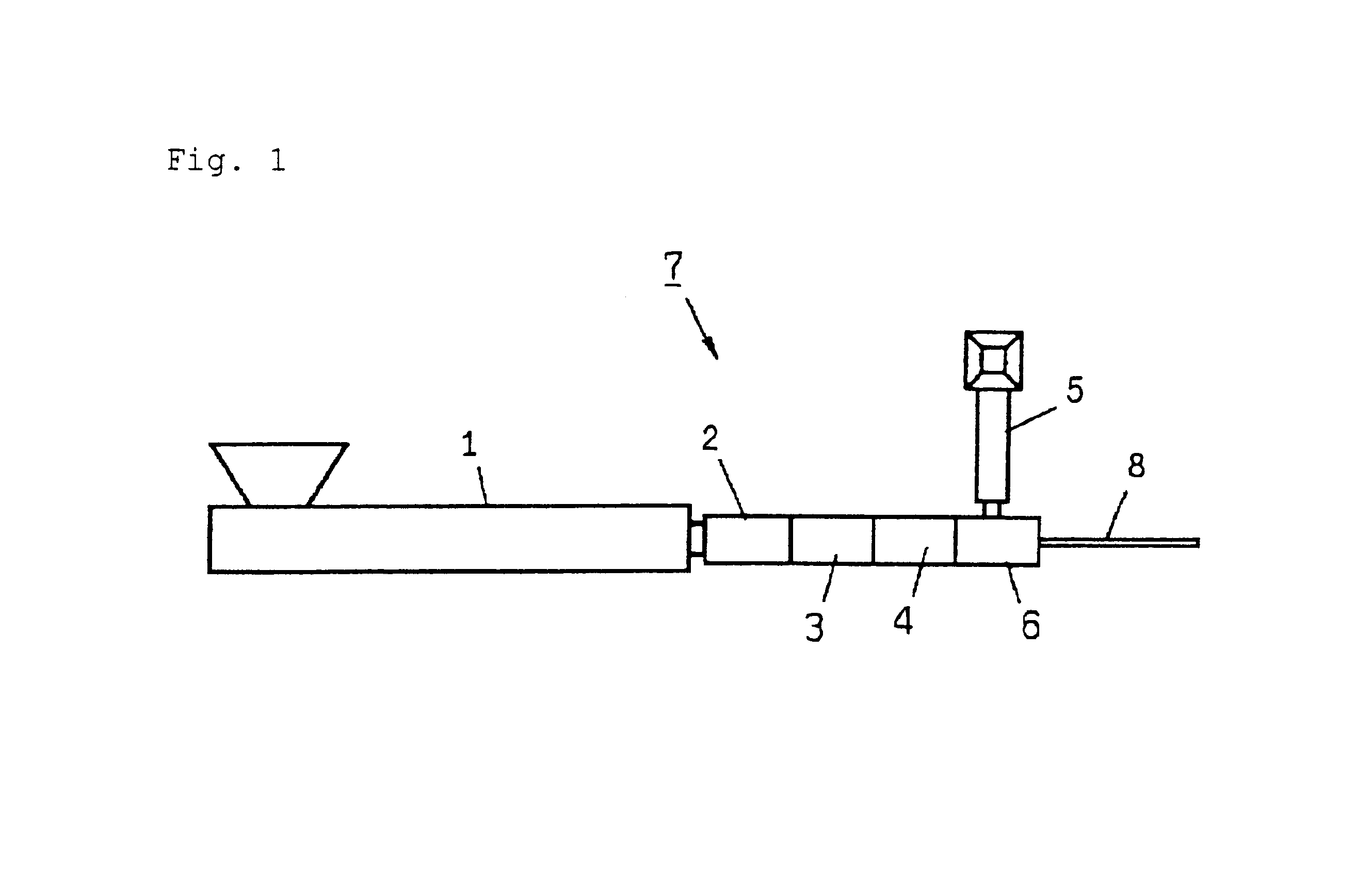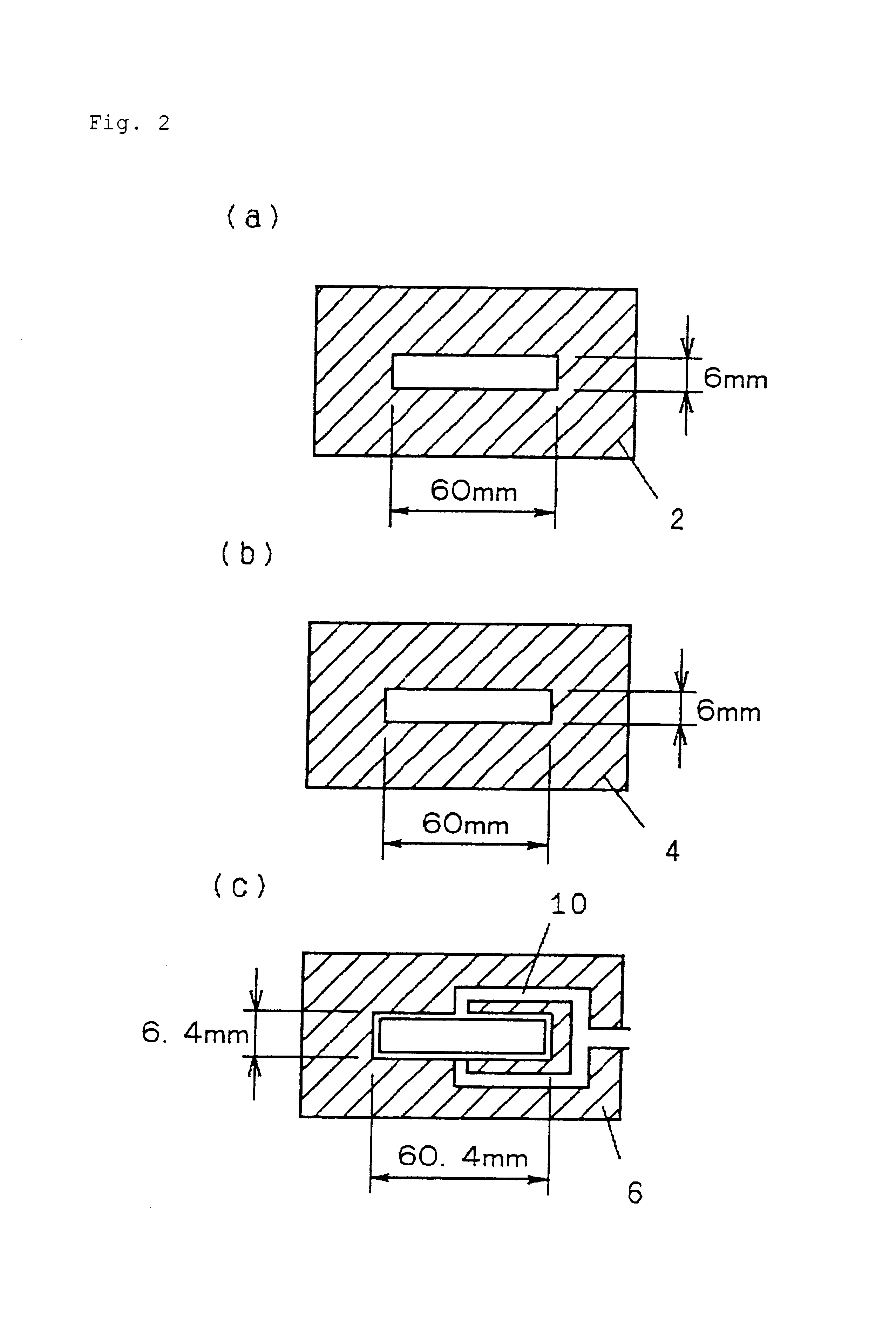Molded article from thermoplastic composite material and method for producing the same
a technology of thermoplastic composite materials and molded articles, which is applied in the direction of filament/thread forming, synthetic resin layered products, record information storage, etc., can solve the problems of increasing the thickness direction of the molded article, discoloration and fading, and insufficient use as an architectural material in the field, so as to reduce the extrusion capacity and uniform temperature distribution within the cooling die
- Summary
- Abstract
- Description
- Claims
- Application Information
AI Technical Summary
Benefits of technology
Problems solved by technology
Method used
Image
Examples
example 2
Except that a core layer was extruded and shaped using the hot shaping die (profile die), cooling die (profile die, not shown because it is of the same configuration as the surface heating die), surface heating die (profile die) and hot coating die (profile die) as metal dies, all shown in FIG. 3, and then the resin material supplied from the extruder 5 (FIG. 1) was extruded using a crosshead hot coating die (profile die) to coat the core layer, the procedure of Example 1 was otherwise repeated to provide a molded article of a thermoplastic composite material having a special profile cross-section.
example 3
Except that each of the metal dies shown in FIG. 3 was used and a homopolypropylene (product of Japan Polychemical, Novatec MA3) was used as the resin for the coating layer, the procedure of Example 1 was otherwise repeated to provide a molded article of the thermoplastic composite material having a special profile cross-section.
example 4
Except that each of the metal dies shown in FIG. 3 was used and a homopolypropylene (product of Japan Polychemical, Novatec MA3) and a weather resistance-improving agent (product of Matsuura Chemical; AL103, formulated at a level of 1 weight % relative to the homopolypropylene) were used as the resin for the coating layer, the procedure of Example 1 was otherwise repeated to provide a molded article of the thermoplastic composite material having a special profile cross-section.
PUM
| Property | Measurement | Unit |
|---|---|---|
| melting point | aaaaa | aaaaa |
| weight % | aaaaa | aaaaa |
| weight % | aaaaa | aaaaa |
Abstract
Description
Claims
Application Information
 Login to View More
Login to View More - R&D
- Intellectual Property
- Life Sciences
- Materials
- Tech Scout
- Unparalleled Data Quality
- Higher Quality Content
- 60% Fewer Hallucinations
Browse by: Latest US Patents, China's latest patents, Technical Efficacy Thesaurus, Application Domain, Technology Topic, Popular Technical Reports.
© 2025 PatSnap. All rights reserved.Legal|Privacy policy|Modern Slavery Act Transparency Statement|Sitemap|About US| Contact US: help@patsnap.com



